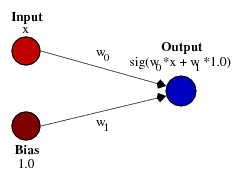Source of article The Jury Room - Keene Trial Consulting.
 Time for another one of those combination posts on things much too good to overlook. This time we are almost all about various sorts of bias to keep you up to speed on the different ways we make (and teach) biased judgments.
Time for another one of those combination posts on things much too good to overlook. This time we are almost all about various sorts of bias to keep you up to speed on the different ways we make (and teach) biased judgments.
Bias is taught—even to artificial intelligence
We hear a lot about how parents pass biases on to their children but how about how the creators of artificial intelligence devices pass on their own biases to their creations? Scientific American has an article explaining how those who create artificial intelligence program in their own biases. Say it isn’t so, you exclaim! Here’s an example of a “computer algorithm that identifies black defendants as more likely to commit a future crime even though the program was not designed to consider race” in computation. Some have referred to this as a “white guy problem” in artificial intelligence and it has been linked to the problem of fake news. There’s an intriguing story of a researcher who set out to prove stereotypes on criminal-physiognomy wrong—and found quite the opposite and leaped to a “reckless conclusion” that “facial structure predicts criminality”. Yikes. You will want to read this one!
Your friends are secretly accessing your Facebook account
You should probably change your password. According to a study of more than 1300 Facebook users, new research found that 24% of them (more than one in five) had snooped “on the Facebook accounts of their friends, romantic partners, or family members, using the victims’ own computers or cellphones”. You may have seen examples of this where the status of a parent with multiple children is changed to say something like “Kelsey is my favorite child” (and that would mean Kelsey has accessed that parental account). The more concerning access is the “jealous snoop” who, according to the researchers, will access your personal messages for 15 minutes or longer (typically to the detriment or even dissolution of the relationship). You can read the entire research paper here.
The bamboo ceiling: Where are the Asian-Americans in leadership?
Harvard Business Review blogs posts an intriguing article on diversity and how Asian-Americans out-perform other minorities and Whites in terms of education, employment and income. However, Asian-Americans are under-represented in leadership leading to the term “the bamboo ceiling”. The bamboo ceiling is actually worse than the glass ceiling effect for women. Why is this happening? The writers suggest it happens because of stereotypes about Asian-Americans. Further, those who stand up and behave differently than their ethnic stereotypes often experience a backlash (meaning they still do not advance). The authors recommend that we rethink what a “good leader” looks like as the worker population in the US continues to diversify. (You may also find the lessons we’ve learned about attitudes toward Asian-Americans in litigation interesting.)
How fast does racial bias kick in? The time it takes for your heart to beat
New research in Nature Communications tells us that our heartbeat itself can increase pre-existing racial biases. When participants saw a Black person approaching during a heartbeat (as opposed to in between their heartbeats) they were more likely to see the situation as life-endangering. We are impressed that they could time the image display that precisely. As you might imagine, this is thought to have strong implications for addressing the high number of shootings of unarmed Blacks. We wrote about this sort of research in a paper following the Trayvon Martin shooting and this work focuses again on whether a Black (or White) individual was holding a gun or simply a mobile phone. The researchers found that when the image of the approaching (either Black or White) person was flashed at them at the moment their heart beat (rather than in between heartbeats) they were about 10% more likely to perceive the object held by the Black person as a gun. Multiple news outlets have picked up this story. You can read summaries at Science Daily, Science Newsline, or Newswise. You can read the complete article here.
Can you really overcome unconscious bias?
Yes, says Jordan Axt writing in Scientific American blogs. He describes a series of studies published recently in the Journal of Experimental Social Psychology. Axt and his co-author, had participants play a card game where either black or white avatar faces were (randomly) selected to represent their player. What they found was that those participants who wanted to behave in non-biased ways were more resistant to “learning” black faces as avatars would mean a losing hand. The author says that “performance only suffered when the task supported potentially unwanted racial associations”. They believe that our underlying attitudes “may have the first word but not the final say in behavior”.
Azevedo, R., Garfinkel, S., Critchley, H., & Tsakiris, M. (2017). Cardiac afferent activity modulates the expression of racial stereotypes Nature Communications, 8 DOI: 10.1038/ncomms13854
